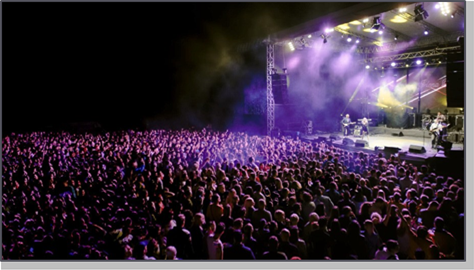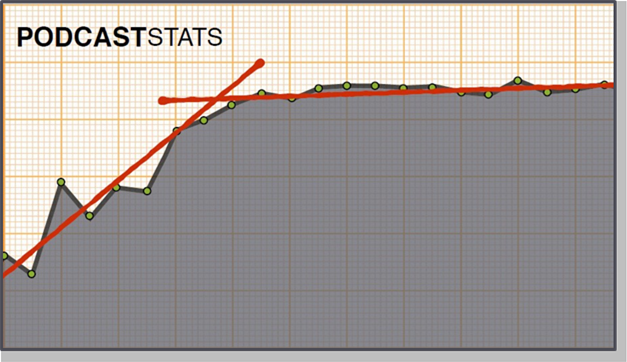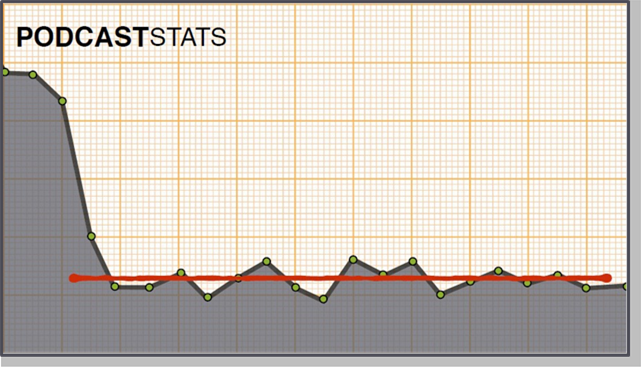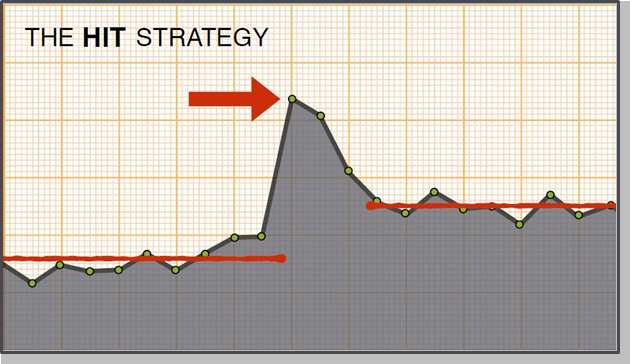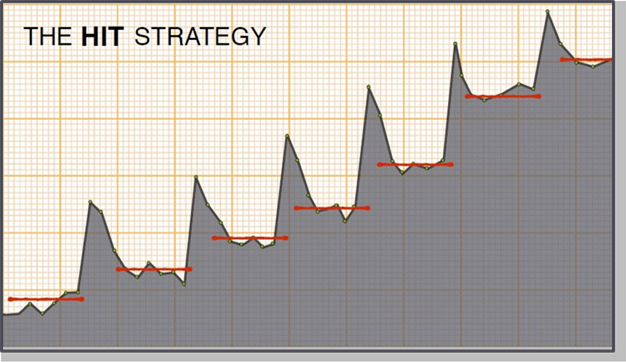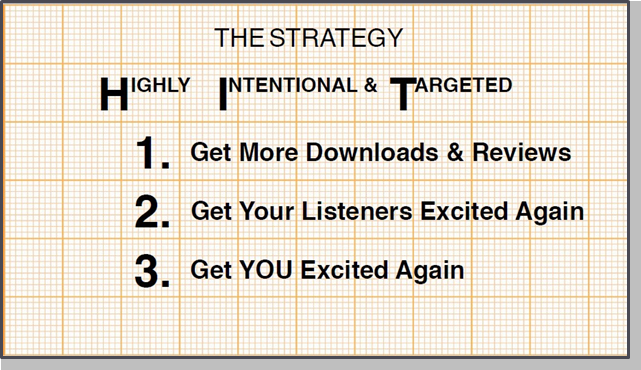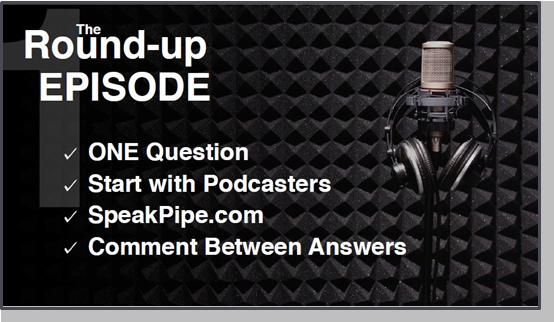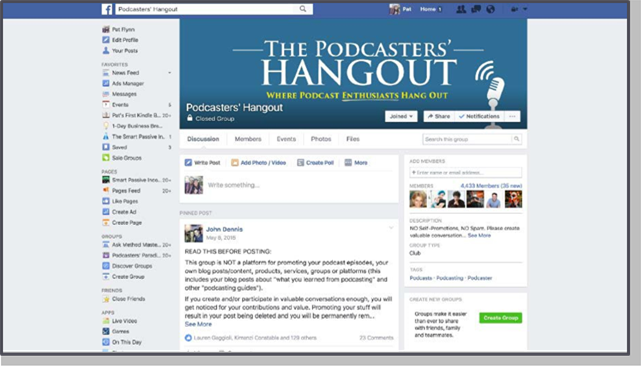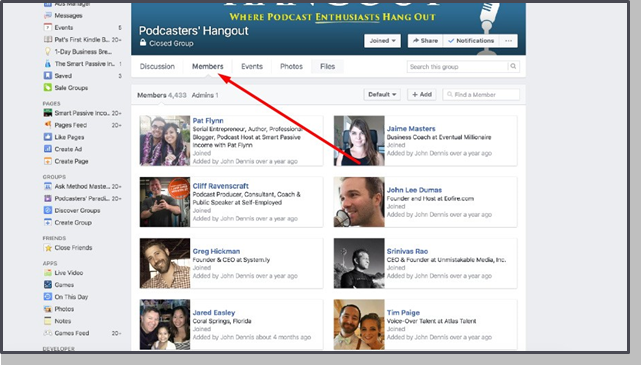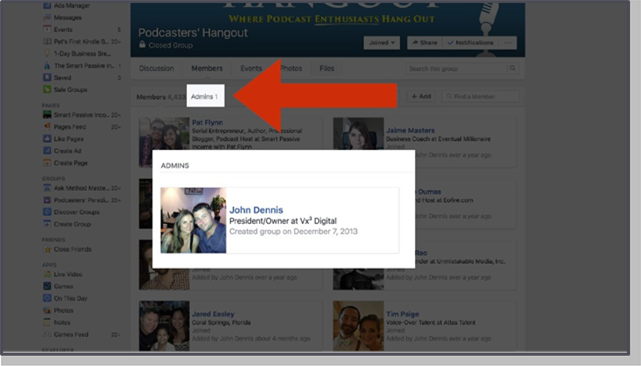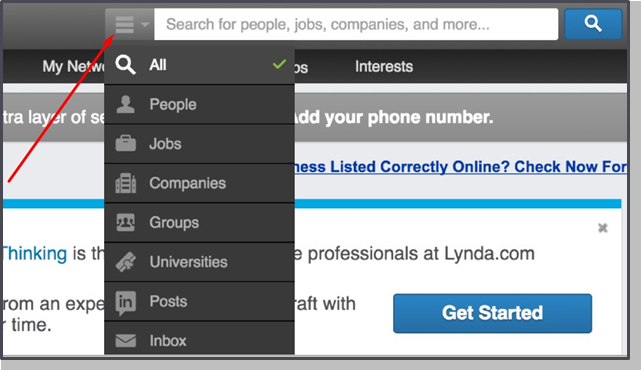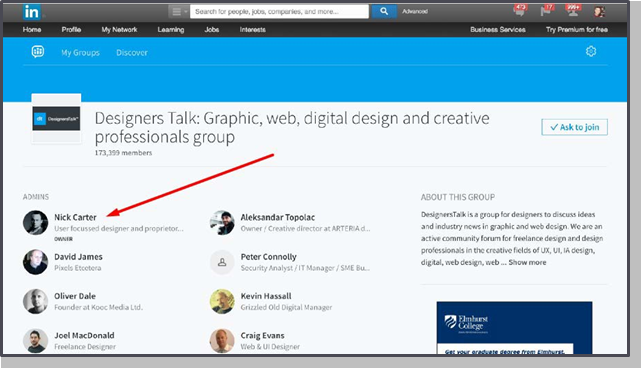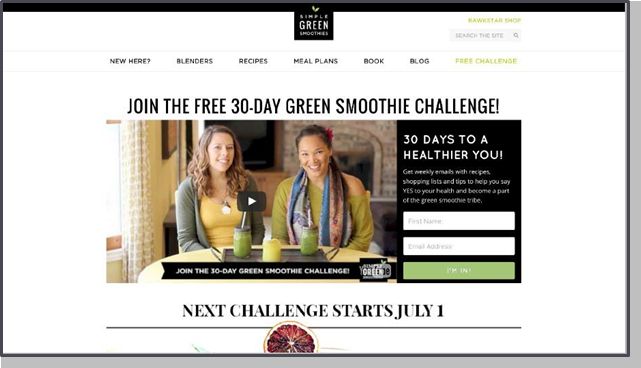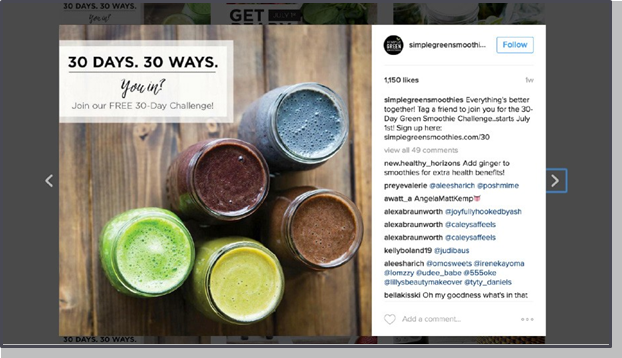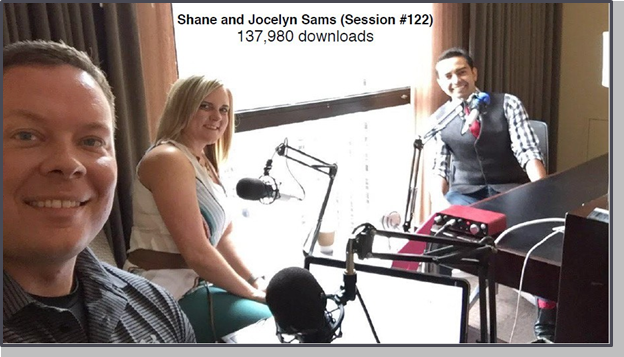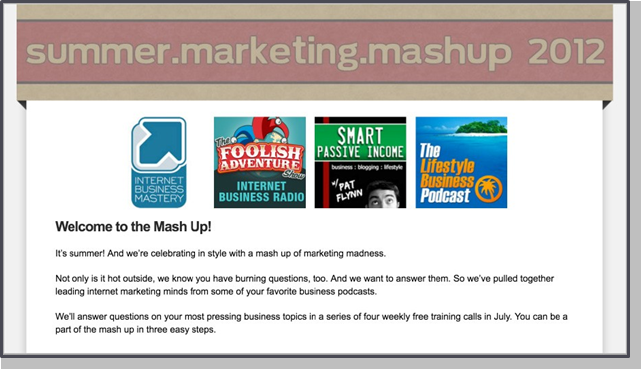Pat Flynn
Pat Flynn is a father, husband, and entrepreneur who owns several successful online businesses and is a professional blogger, keynote speaker, Wall Street Journal bestselling author, and host of the top-rated business podcast, The Smart Passive Income Podcast, which has earned over 30 million downloads, multiple awards and features in publications such as The New York Times and Forbes.
Podcasting is such an amazing tool. Last year it was deemed, the year of the podcast, right? Podcasting is continuing to grow. What’s exciting is we’re starting to see a lot of mainstream shows now on the Podcasting world. And that’s introducing a lot of people to the podcasting space.
On average, a person subscribes to five different shows and listens to more than one hour of content a day, which is incredible. And that’s amazing news for those of us who are in the Podcasting space because it provides a unique opportunity for us to get in front of our audience in a way unlike any other platform can.
There is a lot of opportunity there because it’s a passive form of consuming content. You can consume podcast content on the go. You can’t necessarily do a bench press and watch a video at the same time. I mean, I guess you could, but it would look really weird and awkward sometimes. But with a podcast you can have your earbuds in and a person can be doing other things.
People are commuting every single day. About 143 million people commute every single day to work and on average they’re in their car for 40 minutes. They should be listening to you, hopefully driving, maybe an electric car cause that’s a lot of pollution.
I was talking to somebody at lunch the other day who was a little upset because they have Podcast and it wasn’t performing to their liking. I asked, “Well, how many downloads do you get per episode?” And they said,
“You know I get about a thousand downloads per episode, I come out with one episode per week.” And I’m like, “Yeah, those are actually really good numbers, because when you think about it, that’s a thousand human beings who are listening to you every single week.”
And then I framed it this way, I said, “Imagine creating an event where you are able to invite a thousand people every single week.” I mean the logistics of doing that would just be insane, just think about the size of the room you would need, to create such an event and the costs of holding it every week. And then I started to see it kind of change in his head, “Well, yeah, you’re right.”
This is this thing with podcasters or anybody who is doing digital marketing. We get lost in the numbers. Right? We want more subscribers, more followers, more traffic, but what we really have is the attention of human beings on the other end.
My goal is to share with you those of you who have a podcast, or who are going to start a podcast, information about how to increase your download numbers. In the beginning it’s great, you might have a small number of people, but remember you’re treating them like human beings. So, it’s as if you’re creating a little small meeting with those people every single week. Then it continues to grow, and maybe you have hundred people in this “room of yours on the stage,” your platform, every single time you come out with
a new episode. And then it grows from there maybe you have a thousand people; this is what a thousand people would look like.
These are people who are listening to your podcast, and of course it can continue to grow from there into potentially tens of thousands or hundreds of thousands of people – imagine those people filling a “virtual” football stadium, with you standing right in the middle.
My Smart Passive Income Podcast, every episode gets about a hundred and twenty thousand downloads. And I’m just recording it from my home office, which is crazy, right? I have a stadium, and I’m like right there in the middle and people are listening to me. It’s a little crazy. And you have a lot of influence when you have a stage like this.
The Importance of Monitoring Your Podcast Stats and Trends
Let’s talk about stats a little bit. Yes, they’re human beings, but we also want to improve our stats. And commonly in the beginning you might have good, large number of downloads and some good acceleration and velocity in your podcast downloads because you just started. You have your list people are sharing it and it’s exciting as you go through this honeymoon period.
And then it begins to flat line a little bit, which is a little concerning, right? Because you’re putting all this effort into it and you know you’ve run through your back log of episodes. You’re having to create more episodes and then eventually you might see that things may start to taper off.
Now, what’s nice is that your podcast episodes are evergreen and likely you’re not going to see major declines. Which is good, you’re going to see just either flat lining or maybe a little of decline but some of my podcast episodes and podcasts that haven’t recorded a new episode in years are continuing to grow. So, there’s a lot of opportunity there. A lot of people worry about this whole hamster wheel of content thing.
Some people are creating podcasts specifically to launch their new book or to launch their new product. They have finite number of episodes and they know that if they were to produce them in such that they would drive more leads or drive more sales then it’s kind of a one a done thing. And they have 20, 30 episodes up, but they’re continually working to build a relationship with people and feed people into their systems, which is really cool.
What we don’t want to see, and this is for those of you who may see this is the future. There’s something drastically wrong if you see a drop like this. Where you are way up there and now you’re way down. This may happen for a few reasons. Maybe you had some incredible luck with iTunes and you’re in the rankings or you were featured on their homepage. The moment you are no longer there, you might see a drop like this. This might happen because of certain technical difficulties with your feed and things like that. So, if a drop like this were to happen, this is why it’s important to pay attention to stats. If
you see this, then you can ask yourself, “Okay what happened?” You need to know why things are the way they are so you can adjust and adapt.
Another reason a drop like this can happen, and this happened to me once because it turns out something broke on my website and the player was no longer working. That’s when I realized that 50% of my podcast listeners are listening on my website. Yes, I want them to go to iTunes, but a
lot of time when people are listening to you for the first time, they’re not listening to you for the first time through iTunes, or Stitcher, or Google Play. They’re finding you for the first time on your website. So, making that website experience great is really important, and that’s why I created the smart podcast player and a few other things to help with that listening experience on a website.
What is this Thing Called a HIT Strategy?
Now, let’s talk about this HIT Strategy that we’re talking about here. Ten strategies to create a hit episode. What does that mean?
It’s not just creating, you know, a blockbuster episode or having an incredible guest on. Right? Having a great guest on your show can do this, but there’s a lot more ways to do this where you don’t need to have an influential person on the show to make this happen.
So, here’s the hit strategy, you have a spike in downloads because of these things I’m about to teach you. Which is good, but then the spike come back down to a level that’s not as low as it was before because you’ve gained some new subscribers.
The diagram above shows the impact of the strategy over time. You’re going to spike up and come back down, and the it will repeat, each time moving a bit upwards and this just naturally happens. A lot of you who have podcasts may have seen this already, in some way, shape or form. We’re going to increase the velocity here of that, such that will have this rising sort of tide in our podcasts. Once you start to get this going, it really starts to help you increase your download numbers and your subscribing and your rankings but more importantly your business.
The HIT Strategy – Highly Intentional and Targeted
So, we’re going to talk about how to get those things. Yes, we are going to create podcasts that are “hits,” but HIT in terms of this strategy is an acronym for Highly Intentional and Targeted. That’s what this acronym means, because there’s a purpose here, there’s planning involved. A lot times with podcasts or specifically because it’s so fun to do, we kind of just do it, but when you have purpose behind it you can make things work a little faster for you.
There are a few things we want because of this strategy. We want more downloads and reviews, that’s a given. But we also want to get our listeners excited again, this is a thing that happens. You know we want to stay consistent with our show and we want to come out with a nice cadence, so people can get used to it. But if they get too used to it just becomes this thing that normally happens.
For example, if you have a call to action that’s just repeated over, and over, and over again it’s just going to be lost. Right? Or people might just get into a rhythm where you know, they’re just going to casually listen and not really pay attention to what it is you want them to do from those episodes.
And then number three, and this is cool because these things will help you get even more excited about producing your podcast again. Now I’ve gotten to the point several times in my show where I felt like it was such a drag and I almost wanted to give up a couple times. But using these strategies that I’m going to share with you today, it’s going to help up lift your brand and your excitement to help get your podcast going again. And when you’re having fun producing your show, your audience is going to have fun listening to it.
I have several podcasts out there, the Smart Passive Income Podcast. I also have Ask Pat, which started as a five-day a week episode podcast in 2014. We reached episode 1,000 in November 2017, which is great. And I decided to stop and reassess that show a little bit. Because after answering voicemail questions for my audience a thousand times I eventually realized that a lot
of those questions were being repeated and they were the same. But more importantly I wanted to go deeper with those people.
In February 2018, I relaunched Ask Pat, it’s Ask Pat 2.0 now. And now we do a once a week show that is an actual coaching call with a person. They’re asking me a lot of questions, but I’m able to ask them questions back. The feedback I’ve been getting from those kinds of episodes has been amazing, because you’re getting an insider look. Now I’m getting people who are like, “Pat
how can I hire you to do this same thing. Cause I’ve gotten a taste of it by listening to you. Now I want to hire you.”
I don’t do one-on-one coaching but if I did, this just shows you that a podcast is a great platform to tease a little bit of what it might be like to work with you, such that you can then bring people into a program or an online course or something of the like.
Another one I have is the One Day Business Breakthrough Podcast, with my
buddy Chris Tucker. This was a show that we’ve done a couple times and kind of whenever he’s in town. We record a bunch and batch process it. And we come out in seasons now and that’s just kind of a fun thing to do with
a friend. One more is the Food Trucker Podcast. Now this one, compared to the Smart Passive Income Podcast, doesn’t get very many downloads
because it is niche specific, but every episode gets about 500. So, with each episode I’m getting 500 food truck owners to listen to me and take the action that can help them build their business. So again, you don’t need very large numbers to do very well with your podcast.
Put that all together, and it’s 55 million downloads in total, across all four of these podcasts. And I have a fifth podcast coming out, next month and it’s a show with my son, who’s eight years old. He comes home from school, he goes to an entrepreneurial sort of project-based type school, and he comes home with all this energy. And I was like I need to capture this and now it’s going to be in a podcast used to help inspire parents and their kids to talk about entrepreneurship. It’s phase one of a multi-phase thing related to me wanting to have entrepreneurship in schools. And that’s something that’s a big passion of mine right now. So, a podcast is a great way to start a movement too.
Alight, now that we covered the goal of the HIT Strategy, and how it will not only get you more downloads, but will also get both you and your listeners excited again, it’s time to talk about ten HIT episode ideas — remember highly intentional targeted episode ideas — and how to execute on them.
Rule: Treat HIT Episodes Like an Event
Before moving on to the ideas, there is a number one rule that you need to follow. You want to treat these episodes as like they are an event. Like you did when you launched your podcast, these episodes you want to treat in the same. To do this, there are five requirements.
- Pick a launch date
- Create Buzz for it
- Use social media
- Utilize your E-mail list
- Get your network to promote the event
What does that mean exactly? That means number one you want to pick a launch date, a date when you know this episode is coming out. So that
you can create buzz for it, right? You don’t throw an event and then just tell people the day it happens, right? You let people know ahead of time. You need to do the same thing with HIT episodes, “Hey guys, I’ve got this great episode coming out. Here’s what it’s going to be like, make sure you have it in your calendar because it’s gonna blow you away.” This way people can kind of anticipate that. That’s like almost when you get tickets for a concert and you’re thinking about it every day. Right?
Number three: you want to make sure you utilize your social media to kind of create this buzz, both ahead of time and close to when the show comes out. Obviously, you want to use your email list as well. This is a big deal; you’re putting all this effort into these podcast episodes that are going to be different than what you normally come out with.
Finally, you want to get your network to promote this as well. And there’s several different kinds of shows that will give value back to them when you do this too. So that you’re not just asking and asking and asking and asking and asking and asking.
OK, now that we got that all clear, let’s move on to the ideas.
HIT Podcast Episode Idea #1 – The Round-Up Episode
Number one is the round up episode. You need to remember we’re going over ten different types. Your podcast may not fit for some of these. Your podcast may fit perfectly for some of these. But this round up episode was inspired by what happens normally in the blogosphere. Which is where a person who own a blog collects answers to a single question and then put them all into one blog post.
The round up episode becomes a great way to share a lot of information from a lot of different points of view. It’s a great way to feature some of your favorite people. It’s a great way introduce new people to your audience and have kind of a different taste and flavor to the normal content that you share. Now when it comes to podcasting, this is something that does take work. I’m not going to say that you just snap your fingers and these things are just going to automatically happen. These things take work, but they will pay off.
So, when you think about it, okay round up episode for podcast. What does that mean? I need to get answers from people? Via audio then put them in this episode. Yeah, that’s basically what I’m talking about here.
Pick a question which is likely the most common question or something that your audience is has a burning desire to know what people think about that. In the food truck space, we did the same thing, but as a blog post (because it was before the Podcast came out) but the principle is the same. I asked 50 people who owned a food truck to answer this question: “What’s one thing you wished you knew before you started a food truck?” That blog post when viral and has been seen over a million times. It spread on Reddit, because people are just so interested in learning from those who are already there.
So, you likely know people in your space. Hopefully podcasters because this makes it very simple because they have the equipment already, they’re used to being on podcasts. Plus, you get that cross promotion with their show
as well. When their listeners come to listen to their favorite people on your show, now there’s your show being promoted, then they can go back to their website. This is an example of how you are providing value to the people who are helping you with the podcast.
By the way, Speakpipe.com is the tool I would recommend using to collect these voice mail questions and answers. You can just think of a question, send a link that comes from Speakpipe.com to your friend and say, “Hey
can you just take 30 seconds, 60 seconds to answer this question for me, I’m going to put it in an episode. I’m going to share it with as many people as I can. You’re going to get some good exposure for it and it’s gonna be a very valuable episode to our target audience. And hopefully we can cross promote and if you’d love to share it on that day it comes out too, that’d be great. Here are some of the other people that I’m going to have alongside with you. So, if you have some high-end people, that you know that are going to be included in this you can name drop them to convince others to kinda wanna participate as well.”
What I would do in your episode when you’re editing this is just start by saying something like: “Hey guys here’s like ten answers from like ten different people.” Well, not exactly like that, but you get the idea.
Speakpipe.com gives you the MP3 files and you put the answers into your
show.
Then, in between each person’s answer, you come in and interject and add more commentary to it. What this does is make you essentially like the host of this round table. But it’s not live, it’s pieced together in your editing software. But because you’re showing up between each one, it associates you with that one person. And it also makes you the sort of master/teacher in this situation. It elevates your brand just because you’re the one, where all these people are coming on and posting this information.
This strategy has worked out well for me. In Episode 227, I had 15 entrepreneurs answer the question, “What’s one thing I wish I’d known before starting my own business?” And this thing when viral almost the day it came out, because you know those relationships I had were with people who loved to promote this and wanted to be associated with these other people.
In episode 250 I didn’t ask experts, instead I asked some of my students
to share some of their stories of failures and how they turned into success. This is a great way not to just feature influencers in your space, but people who are “just” students because then it also shows, that, wow you’re paying attention and featuring your own students. Listeners will think, “Wow, I want to be one of those students, too.” This gets people to want to be a part of community, your community.
That’s number one, the round up episode. Now it does take some work; planning ahead is the mantra you’re going to hear a lot in this strategy guide. This is something that takes some planning and coordination. But Speakpipe. com is a tool that makes it very simple to just send a link. And then you get emails when there are those people answer those questions. It’s also a great tool for customer service and that’s how I was able to utilize Ask Pat because that’s how I got voicemail questions from people.
HIT Podcast Episode Idea #2 – Interview a Forum Owner
Number two, and I wanted to stack this one close to the top because this has been the number one hit method for me. If there were one of these ten ideas to absolutely implement, this would be it. I’m teaching this to my podcasting students right now, and some of them are using only this strategy to grow their show from scratch to now tens of thousands of downloads per month.
It’s this idea of interviewing a forum owner. Now interviews are great because your often able to get information that you couldn’t create yourself. You have personality on your show, if it’s somebody who’s an influencer that’s great too, because you’re now associated with that person.
You’re also having a 20- to 30-minute conversation with them; you’re building a conversation with that influencer at the same time. But it’s difficult
sometimes to get those people to say yes to coming on your show, especially if you’re just starting out. Right? “Why would I waste my time on your show, you don’t have very many subscribers.”
This is why building a relationship with those people up front is really important. But beyond that, they’re just so busy. Right? And more than that, you’re less likely to get that person to share it. I’ve had Tim Ferriss and Gary Vaynerchuk on my show, who are great and amazing, and those episodes did see spikes, because of who those people were. But they’re not going to share it with their tribe; they have to many things to share already.
Interviewing a forum owner is great. By forum owner I mean a Facebook group owner, or a LinkedIn group owner. Why is this important? Number one they own a community, and they have potentially hundreds, if not thousands, or hundreds of thousands of people, who are there because this group
that they set up. They are less likely to asked for such a task to come onto
an episode. Now they can come on to be the featured guest, or you can combine this other groups. For example, maybe you can get 10 groups, and each of their owners gets to answer one question and then you feature them. Here’s what happens, A, they’re more likely to say yes. B, they’re more likely to share it too. Now they’re not sharing it with random people they’re sharing it with their people.
Instead of you going into a forum or a group and saying, “Hey guys listen to my podcast,” you’re utilizing the relationship that you’re building with the
forum owner to increase your downloads, because that trust is there between that person you just interviewed and the people in their group. Now they’re not coming to listen to you, they’re coming to listen to who they’re following or the group owner, but because of that, as a bi-product you get some amazing download numbers.
Here’s an example, this is a group owned by a good friend of mine. The Podcasters Hangout. Now I’m going to walk you through it, to show you just how easy this is to do. Number one, you can just use the Facebook search to find groups related to your niche.
Then you go in here, you click on members and you’ll see a number of members in there, and it actually highlights who the admins are for you. You don’t even have to join these groups to get access to this.
So, you click on that and boom! There’s John Dennis, the forum owner. I’m going to reach out to John and say, “Hey John, I’m doing a podcast episode about podcast communities and what’s kind of trending now in this space.
How would you like to come and provide 20 minutes of time?” And here’s the thing – you make that person look like a hero. Because they are then more likely going to want to share because they’re the hero of that community.
You’re giving them that opportunity in that platform to allow them to look even better to their people.
This can do very well on LinkedIn as well, so let’s go into the search bar. And if you click on the “hamburger” icon there’s a section specifically for groups. You click on groups. And then you can search, for example, let’s do a search for web design.
Here’s a web design related community that has 173,999 people who could potentially hear about my podcast if I somehow feature this person who owns this group.
If you click through into this, there’s a number of admins, including Nick Carter. I’ll reach out to Nick Carter and be like, “Hey Nick, I have a podcast, that features you know information for web designs. I’d loved to know from you what you feel the next trends are? What’s hot in 2018 based on your community.” And of course, ask him if he would share his thoughts on a podcast – where you will do all the editing and set up work so all he needs to do is “show up” and give you a little bit of his time.
You conduct that episode or maybe just get an answer from him recorded on audio, and you put it together. You share that link with him and say, “Hey if you wanted to share this with your community, I think it would be cool
because you know you’re great.” And you’re going to get a lot of downloads from your targeted audience as a result from the relationship in that interview you create.
Do that, but don’t spam these forum owners, treat them with respect. Also, make sure that you know that you’re there to provide value to them to, not just take.
HIT Podcast Episode Idea #3 – The Burst Strategy
Okay number three, the burst strategy; this is a simple one. You likely see this already if you’re a podcaster whenever you come out with a new episode and you see a huge spike in downloads. Well why not come out with, for short period of time, maybe for a week, and a series of specifically themed podcasts? What I mean is that if you normally do one podcast a week, for that special week, you do a “burst” of episodes for five days, around the chosen theme.
It just makes sense, like maybe for me for example, maybe I’ll do an affiliate marketing week, where every day is going to be related with to affiliate marketing. I can get people ready for that. “Hey guys, affiliate marketing week is coming up, so episodes one, two, three, four, five…” By the way that last episode will likely have some sort call to action for my affiliate marketing course. Or a group or something.
You’re building relationship with them about a specific topic but you’re also getting massive downloads about or from highlighting that topic. Putting this strategy into place, it just makes sense. Going more frequent will get you more downloads, but this allows you to do it for just this short period of time, instead of committing to daily and then you know getting overwhelmed and stopping altogether. If you’re doing it for a short period of time you’re able to manage that plan. You also benefit from this topic that you hopefully have some sort of CTA for at the end.
HIT Podcast Episode Idea #4 – Share for Share (S4S)
Alright number four, S4S, or share for share. This is very common in the YouTube space and this is how most big channels grow. It’s by collaborating with other YouTube channels.
Now, podcasters do this sometimes, but I think we can be a little bit more intentional with it. And the big trick here is that it’s not just that, “Hey I’ll come onto your show and then you’ll come onto my show.” It’s “Hey, we’ll do this and we’ll have these episodes come out at the exact same time.” Again, more planning is involved but you can both benefit. There’s value going both ways as a result in using this strategy.
It’s important that the podcasts come out at the same time because on each episode you can say, “And by the way, if you want to hear the rest of this conversation go and listen to them.”
Now there’s a few cool things that happen with the S4S strategy. Number one you’re going to get people who are in your target audience come to listen to you Podcast but not intentionally to listen to you. They’re going to listen to their favorite person and you just “happen” to have them on your show.
Number two, the way that iTunes works is kind of like Amazon – people who buy this product also buy this product. On iTunes it’s the same thing – people who listen to this show also listen to this show. So now that you’re getting cross promotion you’re going to potentially get some more downloads simply because of that connection. And if you go to related episodes or related shows on theirs, yours will pop up.
Now unfortunately Apple doesn’t do a great job of find-ability for podcasts, but I expect that they’re putting a lot more time and effort as a result of their new podcasting statistics app that just came out, their Native app in iTunes. Or on your phone. All signs point to the fact that they are now figuring out that podcasting is a force to be reckoned with and hopefully by positioning yourself as somebody who is setting yourself up for success relate to these kinds of strategies when they make those changes and make those related podcasts more easily found than you’ll be right there.
HIT Podcast Episode Idea #5 – Behind the Scenes
The number five idea is called behind the scenes. People love to listen to behind the scenes stuff. I think this is one of my favorite strategies because it takes people on sort of a different journey. This is where you can sort of transform where people are when they’re listening. That’s a cool thing about audio — just by a few little touches, music or potentially some background noise, you can make people feel like they are somewhere else.
Like if you listen to any of the NPR type podcasts, they really transform you. You’re in a new place because of that; and if that new place is behind the scenes of what you do, a few cool things happen. It’s almost like those brewery or chocolate factory tours that you might have been on. YOU have this new affinity for this company because A, you’re behind the scenes and you’re seeing the quality work that goes into whatever it is that they do. And B, it’s like you’re getting an insider look at something that most people don’t. This is a great strategy for building super fans, when you share the behind the scenes.
I did this couple times. Once, I created an NPR style Episode 138 where I actually took a portable recorder to Columbus, Ohio when I visited my team and were doing some planning meetings. I decided to just record those meetings and introduce my team to my audience. I captured the sounds on
the street on Columbus and inside some of those meeting, it was really cool.
Now recorded, this episode was about 25 minutes long and it took about 8 hours to edit. So, I will say that it does take little bit more work to create those style of podcasts, but when you do it once in a while, it becomes a nice pattern interrupt. Like wow that’s cool. And then if you have a call to action related to that, that can be really cool, too.
I did another one that was episode 230 where I took people behind the scenes of my speaking-on-stage journey, because it was something I never ever thought I would do and now I do it quite a bit. This was like taking people back into time and listen in on some of my first presentations ever. Which were horrible, and you can hear over time that I’m getting better and better, and more and more confident. By far this is one of the tops episodes that I’ve had emails about. Personal emails and even thank you for sharing this, because people get that behind the scenes look.
Here’s an excerpt from that podcast, to give you a feel for it:
Let me ask you something, what’s the significance of September 2012? Well, that is the very first time I’ve ever spoken in public. And I’m gonna take you through the journey from the first time I went on stage to all the way up to the most recent time I’ve been on stage. And I want to share with you the journey that I’ve had. And how much my mind space changed and what I learned along the way. A lot of the mistakes I made. What I did to get better. And overall, what it’s done for me in business and why do I continue to do it. So, let’s go hop right in, time circuits are ready, let’s go to 2012 for the financial blogger conference also known as Bit con 2011.
I took people into that journey and I show them what it was like. I also think it helps because it’s a little vulnerable to kind of share those things and I think people enjoy listening in on the real story. You go look up the podcast if you want to listen to that episode more if you want to, but I got a lot response from that because it took people on this journey. You probably heard like you were there with me and maybe cringing like I was just now.
HIT Podcast Episode Idea #6 – The Challenge
Okay, let’s move on to number six. The challenge. People love being challenged. When you combine a challenge with a podcast episode that perhaps initiates this challenge, and the challenge is very specific of what the outcome is and how long it might take, you have created an episode that will be a hit. For example, you might use a podcast to kick off a seven-day challenge, or a 30-day challenge, to get people excited and give them the tools, information and support they need to accomplish the goal.
Here’s an example. Jennifer and Jada Sellner have a website, Simple Green Smoothies. They created a thirty-day juicing smoothly challenge and they used Instagram and a number of other content platforms, podcasting, etcetera, to announce it. This was not just their own podcast but getting on other people’s shows to announce this new free challenge. This helped grow their email list like crazy, because it wasn’t just like, “Hey subscribe to us.” It was like “Hey get this result by joining us for thirty days.”
This is something that’s really cool that doesn’t normally happen with episodes — the sharing kind of gets off the hook with this format. You know when they were doing this challenge, you know a lot of people shared it, “hey so and so, friend.” They would just be @-tagging people on all these platforms because they want to be the person who also helps that person change, and because of the challenge that you’re creating, too.
When it comes to challenges, consider: what’s the first step for your audience? What would that be? Can you fashion that into some sort of limited challenge? And what’s cool about this is it becomes something that can turn into evergreen.
I once did “How to get your first hundred email subscriber challenge” and when I did it, it came out live. I talked about it in a podcast episode and on videos and on live streaming. But now it’s automated, and I mentioned this on podcast, it initiates the challenge, because the challenge is just email driven. That’s automated now, which is amazing, so in an automated passive fashion I can help people achieve their first hundred email subscribers. But it was done live just to kick it off. And then it became automated.
You can use a podcast to help support the challenge. It really gets people to act. So, if taking action is something you want your audience to do more than anything, consider a challenge and use the podcast to help support that. It gets shared quite a bit.
HIT Podcast Episode Idea #7 – The Poster Boy
Next is the poster boy episode. This a term that I learned from Brian Harris over at Video Group. He has very interesting strategy for getting in front of other audiences. Let’s say, for example, there’s an influencer out there in your space who teaches a lot of things. You can implement one of those things and crush it, go back to the influencer and say, “Hey we can meet, I did it what you just taught me. And here are the results. I would love to help you get new people to want to achieve the same results, too.”
Then you become featured and this is a great way to get on sales pages and have a little link to your website. Or get featured on a person’s Instagram account. By being the poster you’re your kind of like teacher’s pet.
Are there any teachings from another person you could go through? Or perhaps you’ve already started or are crushing it with that teaching already? And you can go back to that influencer and say, “Dude, it’s working. How can I help you share this with more people?” You can get on their Podcast, if they have one. If they don’t that’s not what this number seven is about, I’m just teaching what the poster boy is first.
You might have people in your audience who are students who have done very well because of what you taught. Invite them on your show; this does wonders for getting new people to want to join your programs too. Instead of you selling your product, now your star students are selling for you.
When I came out with the public launch of my course Power Up Podcasting, I featured three of my students from my beta program in a podcast episode.
And I never from my mouth mentioned the program. I just said, “Hey tell me about your podcasting journey.” And then naturally the program came up as result, but they just talked about the wins that they were having also the struggles that they were having. They just naturally talked about how the course helped them through that process. And that’s what killed my sells. I made $250,000 on the sell because of that podcast episode.
So, featuring your students is great. Question: Who do you think had more downloads: Tim Ferriss in Episode 51, Gary Vaynerchuk in Episode 133, or Shane and Jocelyn Sams, who you maybe have never heard of before in Episode 122.
Episode 122 with Shane and Jocelyn, two teachers who listen to the SPI Podcast who took action and who are now millionaires as a result of what I taught them. And this has helped bring more people into my community
as well. There’s more downloads because, even though nobody knows who these people are, it becomes a show that is more relatable. Because Tim and Gary are stages ahead of most of my audience. But these people are just a couple steps ahead.
And it makes it more real. Whatever it is you teach, have your star students come on, they will convince people who are on the fence for you and you don’t have to be very aggressive.
HIT Podcast Episode Idea #8 – The Podcast Carnival
Alright the Podcast Carnival; this was interesting strategy and it does take a lot of coordination with multiple podcasts. What it’s like is a series of three to four podcasts, for example. It could be more, but it’s a string of episodes that all relate to each other. But each episode is different podcast.
This was very popular back in the day with those blog carnivals, right where everybody was just looking to each other. Those don’t really work anymore in terms of SEO, which was the primary reason why they happened.
We did this a while back with several entrepreneur and life style design podcasts. We called it the summer mash up. And we had four episodes that went out once a week. But they each were on a different podcast and as result we all shared our audiences with each other too. Very similar to the round up and some of the other ones, such as interviewing some of the people who are also podcasters, too.
HIT Podcast Episode Idea #9 – Round Two
Number nine, is called round two. This one is simple. Go back to your archive and discover, which episodes were the most popular. Do a follow up episode with those. Maybe something changed, maybe there’s a second way to look at it. Or some additional content that you can add.
This is like let’s take the guess work out of trying to decide what to create a podcast episode about. Let’s go into our archives and our analytics just to kind of tell us for us. Now if you do this every single time, it’s not going to work as well, but every once in while this becomes a nice episode that allows for a burst of downloads. Because it’s proven that people had listened to it and enjoyed it before.
You can even say in your emails, “Hey guys remember that episode that we did back in the day about whatever? It had so many downloads and now we’re doing a part two to it, because people are just been asking.” You could even ask people questions who listened to that first one and then feature their answer here and there in episode two or round two, if you will as well.
HIT Podcast Episode Idea #10 – Niche Specific Show
Number ten is an interesting one. The riches are in the niches, and a niche specific show is designed to target that. You have likely several subtopics within your more general “whatever it is you talk about.” Perhaps some sub niches, subgroups of people or sub markets in your space. Pick one of them and make an episode just for them.
Now you might be thinking why would I do that I’m leaving everybody else out? And yeah, maybe you are, but you’re also giving those people who are in that sub-niche who don’t normally get targeted so specifically an opportunity to see that you are: A, listening to them and B, you are creating something just for them. As a result, they bring more people just like them along to listen, too.
I did this specifically in episode 96 where I interviewed a guy named Corey Huff who helps artists, like painters and such make money online. I shared this episode and I was a little worried because I was like, “Ahh, I don’t know if I should do this. Like most of my audience are not artists. That’s not how they’re making their money.”
But I decided to give it a try and it exploded with everybody who was in artist in my audience shared it with all their artist friends. I mean people were linking to it on Facebook. This is when I had just ten thousand Facebook followers and this one topic got 422 shares. Because people when they discover something like this that resonates with them, and people they know, they’re like, “Oh I need to share with my friends.” They share with friends who they think would benefit. Even people who are not artists who listen to this who knew artists brought those people in, too.
Going niche specific can be really fun too, because then you can really get into the language of that particular group. Into their very specific pains and problems? And you can deliver a lot of great advice to them too.
So, there you have it! If you’re feeling a little bit of a lull in your downloads and want to bring it back to life, and bring YOU back to life too, start implementing the HIT strategy for some of your podcast episodes.
- Round-Up
- Interview Forum Owner
- The Burst
- Share for Share
- Behind the Scenes
- The Challenge
- The Poster Boy
- The Carnival
- Round Two
- Niche Specific Show
This is menu of items that I go to time and time again because you get into this hamster wheel of content and it you know it’s nice to kind of interrupt that pattern every once in a while.
BONUS: HIT Podcast Episode Idea #11 – The Contest
Here’s one more that you can use to spike downloads and get people excited
– the contest podcast. You can run contest specifically to increase the number of downloads and subscribers you have.
I’m doing this on YouTube right now. But I’m also going to be doing this with my podcast very soon. I’m doing a lot of YouTube right now, just to kind of experiment with it and I’m bringing a lot of what I’m learning from the YouTube space into podcasting.
One thing has been the “hooks” on YouTube because it’s important to capture a person’s attention because watch time is the most important metric. So, I’m now incorporating how I hook people into my podcast, too. My vision is I want to get the point where a person finds an episode and they put their phone in their pocket. That’s like the magic, you’ve got them in.
Right, so that’s what we want.
If you are running a contest, talk about it when creating the buzz, perhaps saying that the details will be given out in the podcast. Give them the “hook” so that they can’t wait to get the information.
“Hey guys were doing this give away,” and you can give away whatever it is you want. If it’s related to what it is your teaching that’s even better, but here’s the thing — you can let people know that they gain more entries into this contest by doing several different things, for example subscribing to YouTube channel, Instagram or whatever it is you want them to do.
If the contest is separate from the podcast, you can award additional entries
for downloading a specific one or joining your podcast list.
When running contests, there are tools that automate the process (and make them legal), for example:
- KingSumo – https://kingsumo.com/
- Gleam – https://gleam.io/
- Vyper – https://vyper.io/
Now, I wouldn’t run a contest all the time, but again this is something that you can do in seasons, so that you can get this burst of energy back into your content.
BONUS: HIT Podcast Episode Idea #12 – Autoresponder Magic
And finally, Autoresponder Magic. I personally use an email service provider called Convert Kit. You can do this with most any other types of email service provider. Here’s some of the automation that happens. When I send email to my list, that I have new podcast episode, this is Ask Pat sequence: “Hey, click on this link to listen to Ask Pat. This new episode that just came out.”
I describe why they should listen to it and what they get and such. This tool tags them and most other ones will, it tags them as having clicked that link to listen. And if they are a person who I know is not already subscribed to the show two days later they get an email that says, “Hey, thanks for the other
day.” They open this email and it goes, “Hey I know you checked out Ask Pat the other day and if you haven’t subscribed to the show yet here are the links so you can do that.”
This is just an automated way to get those listeners to subscribe to your show. Now I have different options you can subscribe on iTunes, you can subscribe on Google Play, you can subscribe on Stitcher or where ever. Just all the options are there. Ten days later these same people get an email that says, “About Ask Pat, Hey I hope you’re doing well today, I have a quick favor, you know I don’t normally like to do this but I think it’s important. I would love for you to leave a review for my show too. Here’s how you do it, here’s where I would love for you to do it on iTunes. Even if you listen on Stitcher here’s the link for iTunes, that would help out so much.”
This is automated, this is increasing my subscriber-ship like magic. So again, an email service provider can allow you to do this, and any platform would benefit from this as well. YouTube, anything where people need to subscribe or leave a review, you can automate that in your autoresponder as well.
- Will it Fly? by Pat Flynn
- Smart Passive Income Podcast
- Ask Pat Podcast
- One Day Business Breakthrough

